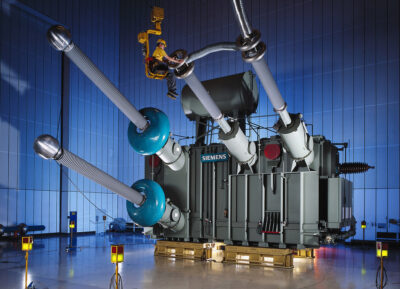The persistent hum of a robotic vacuum cleaner is becoming an increasingly common soundtrack in homes around the world. What was once considered a niche, futuristic gadget has rapidly evolved into a mainstream consumer appliance, signaling a significant shift in home cleaning habits. Driven by technological innovation, changing consumer lifestyles, and the growing smart home ecosystem, the robot vacuum cleaner industry is a dynamic and expanding market with a promising outlook.
Market Size and Growth Trajectory
The global robot vacuum cleaner market is experiencing robust growth. In 2024, the market size was valued at approximately USD 9.07 billion. Looking ahead, market forecasts are optimistic, with projections indicating a significant expansion. For instance, IMARC Group anticipates the market will reach USD 31.79 billion by 2033, demonstrating a compound annual growth rate (CAGR) of 16.97% from 2025 to 2033. This impressive growth is fueled by a blend of macro and micro-economic factors, from rising disposable incomes to the increasing demand for convenience.
Geographically, Asia-Pacific holds a dominant position, with a market share of over 40.8% in 2024. This leadership is attributed to several factors, including rapid urbanization, a large consumer base with rising purchasing power, and the strong presence of key manufacturers in the region. North America and Europe are also significant markets, driven by high consumer spending and a strong preference for smart home technologies.
Key Market Drivers
The ascension of the robot vacuum cleaner industry is propelled by a confluence of powerful drivers:
- The Smart Home Revolution: The widespread adoption of smart home devices and the integration of IoT (Internet of Things) are core drivers. Robot vacuums, with their Wi-Fi connectivity, app-based controls, and compatibility with voice assistants like Amazon Alexa and Google Assistant, are a natural fit within this connected ecosystem.
- Convenience and Time-Saving: In a world of increasingly busy schedules, consumers are seeking automated solutions to simplify daily chores. Robot vacuums offer a hands-free, autonomous cleaning experience, allowing users to reclaim valuable time.
- Technological Advancements: Continuous innovation is at the heart of the industry’s growth. Modern robot vacuums are equipped with sophisticated features such as simultaneous localization and mapping (SLAM) and laser-guided navigation to create precise and efficient cleaning paths. Artificial intelligence (AI) and machine learning enable these devices to adapt to different floor types, identify obstacles, and learn from their environment over time.
- Rising Disposable Incomes: As income levels rise globally, particularly in developing economies, consumers have greater purchasing power to invest in technologically advanced, high-value home appliances.
- Increased Health and Hygiene Awareness: The global focus on cleanliness and hygiene, particularly heightened in the wake of the COVID-19 pandemic, has further driven the demand for automated cleaning solutions that can reduce human contact and maintain a sterile environment.
Industry Trends and Innovations
The robot vacuum market is in a constant state of evolution, with manufacturers pushing the boundaries of what these devices can do. Key trends shaping the industry include:
- Multifunctionality: The days of a single-purpose robot are fading. The market is trending toward hybrid models that combine both vacuuming and mopping capabilities. Many advanced models now feature self-emptying bins, self-cleaning mop pads, and auto-dosing systems for cleaning solutions, creating a truly hands-free experience.
- Enhanced Navigation and AI: Companies are investing heavily in improving navigation. The next generation of robot vacuums will use more powerful sensors, such as 3D vision and Time-of-Flight (ToF) sensors, to better detect and avoid objects. AI is being leveraged to enable more intelligent cleaning strategies, such as recognizing and targeting specific dirty areas.
- Personalization: The future of robot vacuums is highly customized. Users can already set virtual boundaries and no-go zones via mobile apps, but upcoming models will offer even greater personalization, allowing users to adjust cleaning schedules, modes, and intensity based on specific needs.
- Affordability and Accessibility: While premium models with all the latest features can be costly, the market is also seeing a rise in more affordable, entry-level options. This trend is crucial for expanding the consumer base and making these devices a standard household tool rather than a luxury item.
- Eco-Friendliness: With growing environmental awareness, manufacturers are increasingly focusing on sustainability. This includes designing energy-efficient models, using recyclable materials, and developing eco-friendly packaging.
Key Players and Competitive Landscape
The market is highly competitive, featuring a mix of dedicated consumer robotics companies, traditional home appliance manufacturers, and major technology conglomerates. Prominent players include:
- iRobot Corporation: A pioneer in the industry, known for its popular Roomba series.
- Ecovacs Robotics Co. Ltd.: A major force in the market, particularly in Asia, with its DEEBOT lineup.
- Roborock Technology Co. Ltd.: A Chinese company that has gained significant traction with its innovative and feature-rich vacuums.
- Dyson Ltd.: Known for its high-end, premium vacuum cleaners and strong brand reputation.
- Samsung Electronics Co., Ltd.: A tech giant with a diverse portfolio, offering advanced robotic vacuums as part of its smart home ecosystem.
- SharkNinja Operating LLC: A strong competitor in the North American market, offering a variety of models at different price points.
Challenges and Outlook
Despite the promising growth, the industry faces certain challenges. The high initial cost of premium models can be a barrier for some consumers, and the need for regular maintenance and replacement of parts (like batteries and filters) can add to the long-term cost of ownership. Performance variability among lower-end models and the inability of current robots to navigate between different floors also remain points of frustration for users.
However, the future outlook for the robot vacuum cleaner industry remains exceptionally positive. As technology matures and production scales, costs are expected to decrease, making these devices more accessible to a wider audience. The ongoing integration with the broader smart home ecosystem and the development of more intelligent, multifunctional, and autonomous features will continue to drive demand. The robot vacuum is no longer just a cleaning device; it is a testament to the future of automated, convenient, and truly intelligent living.



